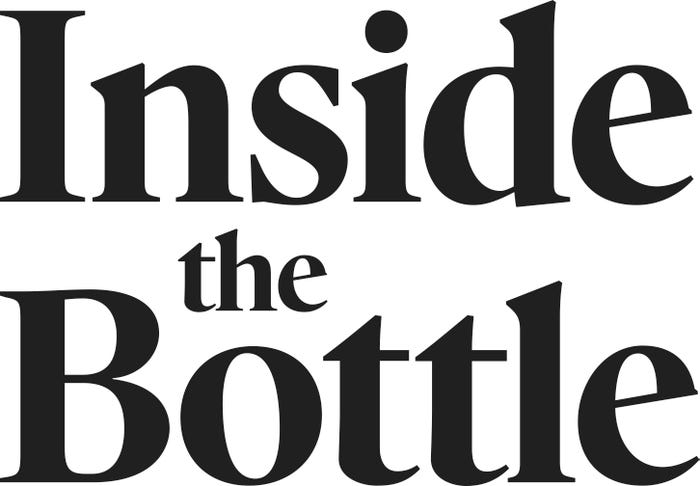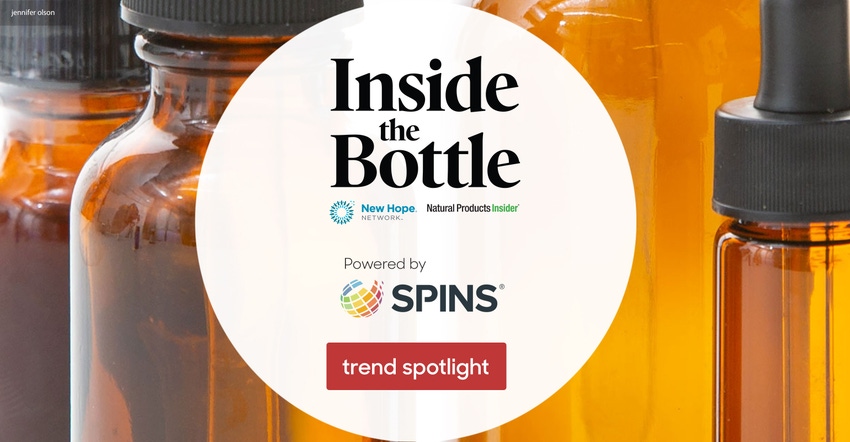
Companies from across the supplement supply chain advocate for a transparent industry and empower consumers to take control of their health. We tell the supplement industry’s story through content, research and education-based events.
Inside the Bottle 2023 trend recap and 2024’s biggest opportunities – spotlight
It’s time to target the consumers who don’t even know what they’re missing. Inside the Bottle tracks why some consumers may shrug off supplements despite strong industry sales.
December 20, 2023

Sponsored by Inside the Bottle
From favorite delivery formats to post-pandemic priorities, changing consumer preferences and needs shaped the supplement market in 2023, a year when, according to Nutrition Business Journal (NBJ), the overall market is projected to rise 2.6% to $62.66 billion by the time champagne corks pop on New Year’s Eve.
Pills had been the favored supplement format since as early as 1500 B.C., when Egyptian healers rolled bread dough, honey, grease and plant powders in their hands to form the first pills. They lost their most-favored supplement status in 2019, however, when non-pill options, fueled by gob-smacking gummy delivery format growth, eclipsed them, according to NBJ’s “Delivery Format Report 2022”. Driven by pill packs and the mainstreaming of personalized nutrition, NBJ researchers predict that pills will remain the most important combined format with just under 40% of the market until next year—when that gig’s up, too. In 2024, market share of pills is projected to decline and keep shrinking every year moving forward. “That doesn’t mean the age of the pill has ended, but the market has shifted in a way that no brand can neglect to keep format in mind in all aspects of product development,” according to the report.
This past year, the children’s wellness sector rebalanced with a predicted course correction after spectacular increases between 2019 and 2021, when its growth even outpaced total supplement growth, with an 18.5% increase for children’s health compared to 7.5% for total supplements, according to NBJ’s “Condition Specific Report 2022." The growth rate declined in the past year, as the segment shifted into more expected, steady sales. Its base, however, is substantially bigger than the pre-pandemic picture. The children’s health market was nearly 35% larger in 2021 than it was pre-pandemic, according to NBJ analysts. By 2025, they expect the segment to be 48% larger.
On the other end of consumers’ lifespans, sales of joint supplements rebounded as the U.S. continued to age and ache. Experts expect that upward trajectory to continue, especially as the prevalence of the leading cause of joint pain, arthritis, skyrockets with an aging population. Between increasing rates of arthritis and activity already evident in the market, more consumers are likely to begin seeking vitamins and supplements to not only combat their current pain, but to maintain the health of their other bones and joints, according to Haleigh Resetar, SPINS corporate communications specialist. Add in younger consumers becoming more proactive about joint health, and opportunities in the category continue to drive product innovation with ingredients such as collagen and turmeric.
Science can fuel sales of those innovative products across conditions and demographics. A consumer psychology study was conducted this year by the University of California San Diego (UCSD) in collaboration with Inside the Bottle Partner Radicle Science. That research found that consumers who viewed a label containing the phrase “clinically proven” were about twice as likely to have high purchase intent, and willing to pay at least 20% more, compared to those who saw the label without that additional claim. Plus, respondents most frequently ranked “proven effective in clinical trials” as a top factor when purchasing a supplement. These findings highlight the consumer-driven need for high-quality clinical trials on supplement products that meet FTC and FDA requirements to substantiate strong structure/function claims — and build consumer trust.
That science, however, is just part of what’s needed to grow sales among the slice of the population that offers the greatest opportunity — and challenge — for the industry: non-regular supplement users. In May 2023, Inside the Bottle partnered with a New Hope Network research group to design and conduct custom research to better understand why approximately one-third of the population does not regularly (three or more times per week) take supplements. What deters them? What influences them? And what opportunities exist for changing beliefs and behavior in this untapped market? To begin to find out, we surveyed 1,506 adult U.S. shoppers.
While lack of trust in supplements may be a key concern to address among the three-quarters of the population that already uses the products, it’s not the number one barrier to sales among non-regular users. Far and away, the key challenge among non-regular users is lack of knowledge (66%, vs. 22% for lack of trust). And we’re not talking about knowledge about sugar levels in gummies or the promise of collagen as a rising joint health superstar. These folks don’t even know what supplements are. They often don’t understand what constitutes a “supplement” or how supplements differ from drugs. And they certainly do not understand how supplements could help. This lack of knowledge feeds into every other concern this group has, including access barriers and perceived value. To learn more about these research findings, read our report, “From the Front Lines: Supplement industry gaps and opportunities.”
Moving forward, the industry faces exciting opportunities for bridging this knowledge gap. How we do so may require us to re-evaluate how we inform and engage these potential supplement users — and may even improve how we connect with core consumers on the way. Are we meeting them where they are with the information they need? How can we reframe the conversation and tailor position and messaging to better match their mindset?
In 2023, we heard the call for education — especially knowledge backed by clinical science. In 2024, Inside the Bottle will lean hard into industry leaders to uncover and analyze how they are meeting the challenge. Stay tuned for innovative strategies from top minds to help you maximize opportunities for creating winning products, attracting new users and cultivating the loyalty of core consumers. We’ll expand our focus on best practice communication strategies related to supplement science, traceability, verification and quality testing for brands and consumers. The program will continue to keep an eye on trends to keep you ahead of the game, while digging into overarching issues of science and consumer trust as we cultivate sustainable market growth with products that enhance the health of consumers—and the supplement industry.
Read more about:
ReportsYou May Also Like